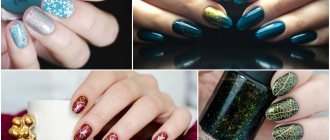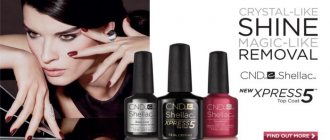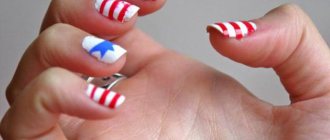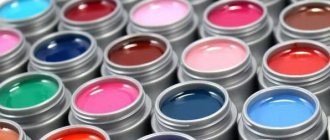The history of manicure
Hands are always visible and, probably, that is why even in the Ancient world they monitored the condition of their hands. For example, in 1964, mummies were found in Egypt, which, as it turned out, were the nail artists of the pharaoh himself. In general, mummies with well-groomed hands no longer surprise scientists. It is known for certain that the great queen Cleopatra used henna to color her nails. And Nefertiti, known for her beauty, did not neglect this technique.
Perhaps the Egyptians stood out most of all for their love of manicure. The color of nails was also a kind of measure of social status. Red colors meant belonging to the pharaoh's family, nobility and priests. Pale colors were found exclusively among the poor.
And in ancient Babylon, rich women used exclusively gold tools to care for their hands. It was in Babylon that archaeologists discovered the most ancient nail care set. The gold set dates back to approximately 3200 BC.
The ancient Chinese went much further and came up with their own miracle remedy for hands and nails: beeswax, egg whites, gelatin, Arabic jam and flower petals. The result was a kind of paint, with the help of which the hands were given a certain color. To have painted hands meant to belong to a high class. In addition, rich women demonstrated their social status through the length of their nails: the longer they were, the more wealthy and influential their owner was. Since nails were constantly breaking, the women of ancient China came up with special tips that were made of gold or silver.

Interesting facts about nails:
- Fingernails grow almost twice as fast as toenails.
- Nails grow much faster at night than during the day.
- Men's nails grow much faster than women's.
- During pregnancy, nails grow faster.
- A left-hander's nails grow faster on his left hand, and a right-hander's nails grow faster on his right hand.
- injured or bitten nails grow faster.
- Those with long fingers have nails that grow faster.
- The warmer the climate, the faster your nails grow.
- After a cold, nails grow twenty percent faster.
- after twenty years and every year, nails grow more and more slowly.
How did manicure come about?
No matter how the Egyptians and Chinese cared for their nails, manicure in the modern sense appeared only in 1830 in France. The then reigning King Louis suddenly developed a very annoying hangnail. Not the first doctor was able to cope with the removal of a small hangnail. When a doctor was finally found to save the king from his torment, the manicure appeared.

The inventive Dr. Zitz was able to make a nail care kit, which included a suede nail file, powder and an orange stick borrowed from dentists. After some time, such sets began to be sold throughout Paris and every fashionista considered it her duty to purchase a set.
Ancient Babylon

Doing manicures was the prerogative of men, and even then the first color palette appeared. Representatives of the upper classes painted the nail plate black - a sign of humility, and the lower ones - green. It was the Babylonian manicurists who invented the most expensive set of tools made of pure gold, found during excavations of burials. The Babylonians also became the founders of nail art - the richest representatives of the people could decorate their nails with pieces of gold.
Development of manicure
The first information about fashion trends in the world of manicure appeared in an American magazine dedicated to hairstyles. By the end of the century, almost all women in the United States were caring for their hands and nails using Dr. Zitts' method.
In 1900, nail polish with glitter was first introduced, which, alas, lasted only one day. Women stopped polishing their nails, carried away by the novelty. Just a few years later, Vogue magazine published information about a product that could add shine to nails. The product had to be applied to the nails and rubbed into the nail plate.

The American doctor W. G. Coron in 1917 introduced another magical remedy that allows you to remove the cuticle without using scissors. Forgetting about cuts and sloppy manicure, women happily rushed to buy up the new product. However, many women were already tired of taking care of their nails, and it was for them that the first manicure salon opened in 1918. Now New Yorkers can fully enjoy all the delights of manicure.
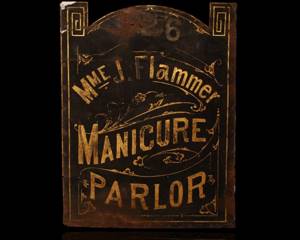
The year 1925 was marked by the appearance of two magical remedies: nail polish and nail polish remover. Typically, nail polish was a light pink shade and was applied only to the center of the nail. Max Factor, which introduced the first polish, soon released a bleach that allows you to create something similar to a modern French manicure. It was Max Factor who introduced the world's first liquid varnish in 1934.
In the 1930s, cosmetic brands tried to market completely different polishes, but most of them were not popular. The scented varnish did not impress the women, and the bright red one attracted only “moths.”

In 1934, another unusual innovation appeared in stores: the Juliet nail repair kit. It was developed by the French woman Juliette Marglen; her kit allowed you to fix a broken nail using silk or paper. In the same year, American Anna Hamburg patented a method for developing dyes for varnishes. Now it was possible to purchase varnish of various shades, which did not harm the nail and was easily washed off with a special liquid.
Eugen Rohrbach became the founder of nail extensions, inventing a coating that could be attached to the nail plate without glue. Two years later, in 1937, the first types of nail extensions using glue and tips appeared. Extensions became widespread only in the 60s, when extension kits began to be sold on every corner. This extension did not last very long, due to poor quality glue, but in 1973, with the advent of artificial acrylic resin on the market, the situation changed for the better.

Only by the end of the 30s could one trace the fashion for a certain type of manicure. Women gave their nails an oval shape and painted them red. In the 1950s, more shades of polish appeared on store shelves, which meant that the trend for scarlet nails receded. In 1978, Jeff Pink introduced the famous French manicure.
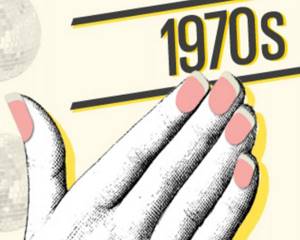
In the 1980s, the development of nail extension technologies continued. The first odorless products began to appear on the market, and gel nail extensions were invented. Nail art has gained enormous popularity. Women happily painted their nails in the brightest colors and drew intricate patterns on their nails with no less joy.

Perhaps it was after a huge number of experiments that women suddenly became concerned about the health of their natural nails. The fashion for natural manicure appeared in the 1990s and continues to this day.

In the 2000s, many new products also appeared: biogel, 3D designs on nails, glitters, sequins and much more. Of course, fashion shows give us a certain direction in terms of trends, however, it is quite difficult to say what is fashionable or not; almost every woman chooses nail polish and nail shape based on her own preferences.
Where do they teach professions?
No specialized education is required for a manicurist; it is enough to complete courses and then improve your qualifications.
On course
The average cost of taking courses is 150-300 US dollars. It depends on the form of classes (individual, group) and their content.
Training courses for specialists are provided by the following organizations:
1. Institute for Industrial Personnel Training, state enterprise (Kyiv).
Classes are held: full-time – 1.5 months, 3 times a week; Saturday group – 2 months, 1 time per week.
Program:
- classic manicure and pedicure;
- French manicure;
- Spa manicure;
- nail shape modeling;
- hardware manicure and pedicure;
- nail art;
- artistic painting;
- nail piercing;
- coloring and correction of eyebrows and eyelashes;
- basics for nail extensions;
- eyebrow and eyelash tinting;
- artistic painting with paints;
- psychological aspects of the work of a manicurist and pedicurist in a modern salon.
2. Educational center of beauty and health Planet of beauty (Kharkov).
Classes are held: Mon.-Fri. – from 10:00 to 20:00; Sat. – from 10:00 to 16:00.
Program:
- Tariff “Basic” (in a group);
- Tariff “Basic” (individual lessons);
- Universal tariff (in a group);
- Universal tariff (individual lessons).
3. LLC “First Training Center” (Kremenchug).
Classes are held at the request of students.
Program:
- general questions on the structure and physiological characteristics of the nail;
- necessary sanitary requirements for the arrangement of the premises, the uniform of employees;
- hand massage techniques;
- information on various methods of processing the free edge of the nail plate and cuticle;
- use of gel and acrylic when working with the nail plate;
- work with various nail plate design options.
Negative sides
Negative aspects of the profession:
- You have to work for hours in a sitting position, leaning over a table. This position negatively affects the health of the spine.
- Contact with chemicals, fumes and dust from a router or saw. This can lead to the development of allergies, skin and respiratory tract diseases.
- A novice craftsman needs to purchase materials and tools on his own. When hiring, an employer will give preference to someone who already has all the necessary equipment.
- Earnings will be small. It will grow in proportion to your experience and the replenishment of your base of regular customers.
- Successful communication is an important aspect of competent service. It is important for all clients to see a friendly attitude towards themselves. However, the master is not always inclined towards positive communication; not all clients are pleasant people.
- No vacation. Those who work unofficially, at home, can go on vacation only at their own expense; no one will pay them vacation pay.
Job prospects
Job prospects for a nail technician:
- An experienced master can participate in nail tournaments and exhibitions.
- When an employee understands that he is ready to share his experience, he can try himself as a teacher, become an instructor, or create his own online or offline courses. In this case, you can combine teaching and working with clients.
- You can develop a client base, become a private owner, thereby increasing your income.
- You can open a studio, hire craftsmen, transfer your client base to them - just do business.

